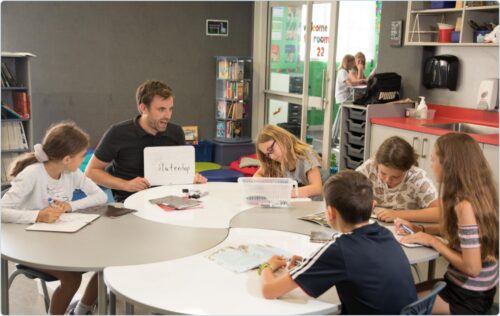We know 1 + 1 = 2 but are there other ways to look at this equation?
By Editor on August 2, 2021 in Curriculum
If you are a mathematics fanatic, like me, you may also enjoy it for the logical and methodical way problems are solved.
There are a clear set of rules and procedures to follow to get to the right answer. An example of this is 1 + 1 equals 2. There are no two ways about it!
More complex addition examples can be questions such as 45 + 25 or 112.6 + 13. However, there is a limitation with these types of questions. They are deemed closed questions that require just one answer. This is where worthwhile mathematical tasks come into play.
What are worthwhile mathematical tasks?
Key literature (Anthony & Walshaw, 2007; Boaler, 2016; Sullivan et al., 2013) explore and define elements of worthwhile mathematical tasks.
Key elements of worthwhile tasks
Allow for more than just one answer.
Accessible and non-threatening for all students.
Can lead in different directions.
Invites decision making and risk-taking.
Promotes speculating, hypothesising, testing, proving, explaining, reflecting, and interpreting.
Encourage discussion and communication.
Stimulates originality and invention.
Extends students’ learning and allowing for further challenges.
Students can self-direct their own wonderings and questions: “what if?” and “what if not?”

So how could we make one of the examples such as 45 + 25 = 70 a more worthwhile task? What about changing the task around?
“How many different ways can we make 70?”
This allows for learners from a range of mathematical abilities to access this question, promotes discussion and extends learners’ thinking.
Can you think of the variety of ways your learners may solve this?
Some responses I have had from my learners include adding tens, decimals, multiplication of fractions, incorporate the use of brackets and exponents – it challenges learners and promotes exhaustion of possibilities and encourages persistence towards a task.
How can worthwhile mathematical tasks challenge your learners?
Challenging, worthwhile tasks require:
learners to plan their approach
process multiple pieces of information and make connections between those pieces
see mathematical concepts in new ways
engage with important ideas
choose, explain and justify their own strategies
expand their knowledge and thinking in new ways (Bicknell et al., 2015; Sullivan et al., 2013).
Below is an example of a challenging, worthwhile task used with a group of able year five & six mathematicians:
On the bus ride to Hagley Park for Friday sport, the probability that a student has a hockey stick is 0.7, and the probability that a student has their sports jacket with them is 0.4. How many students might be on the bus? What is the maximum and minimum number of possibilities for students who have both a hockey stick and their sports jacket? Represent each of your solutions in two different ways.
Prior to delving into research on worthwhile tasks, I would have given the students more information related to the task for example, number of students on the bus and suggested methods or strategies to use but this does not promote student persistence.
Bicknell et al. (2015) define student persistence as:
Students continuing to work on a task even if the solution pathway is not clear.
Students continuing to work on a task even if the solution pathway has been identified or the problem is already solved.
Students are willing to listen to others and to explain their ideas.
If we can encourage our students to persist with challenging, worthwhile tasks this allows them to be active in their mathematical learning.
I invite you to have a think about how you could incorporate challenging, worthwhile tasks into your next mathematics lesson.
References:
Anthony, J., & Walshaw, M. (2007). Effective pedagogy in mathematics/pāngarau. Best evidence synthesis iteration (BES). Ministry of Education.
Bicknell, B., Cramond, A., & van der Schans, S. (2015). Challenging tasks and persistence.
Boaler, J. (2016). Mathematical mindsets: unleashing students’ potential through creative math, inspiring messages and innovative teaching. Jossey-Bass.
In R. Averill (Ed.), Mathematics and statistics in the middle years: Evidence and practice (pp. 253-270). NZCER Press.
Sullivan, P., Aulert, A., Lehmann, A., Hislop, B., Shepherd, O., & Stubbs, A. (2013). Classroom culture, challenging mathematical tasks and student persistence. In V. Steinle, L. Ball, & C. Bardini (Eds.), Mathematics education: Yesterday, today and tomorrow: Proceedings of the 36th annual conference of the mathematics education research group of Australasia (pp. 618-625). Mathematics Education Research Group of Australasia.
To learn more get in touch with
Other articles you might like
What do our littlest learners really need?
Innovative learning environments (ILE) are popping up all around Christchurch.
As I am new to the Evaluation Associates team, I am drawn almost immediately to Michael Absolum’s touchstone book ‘Clarity in the Classroom’ where the Archway of Teaching and Learning Capabilities is thoroughly explored.
